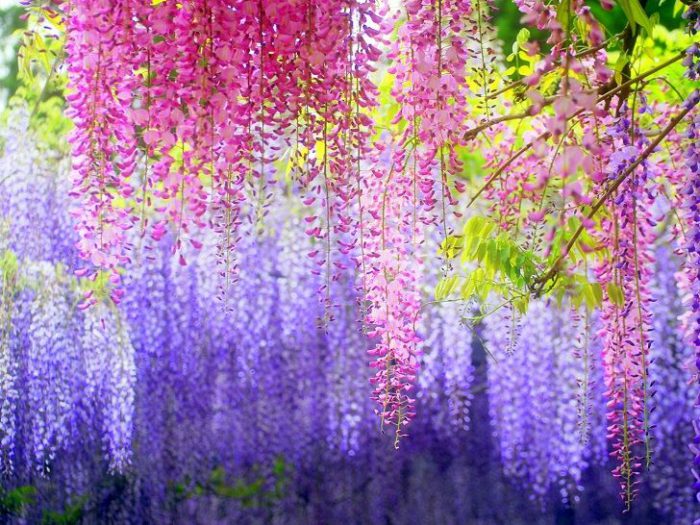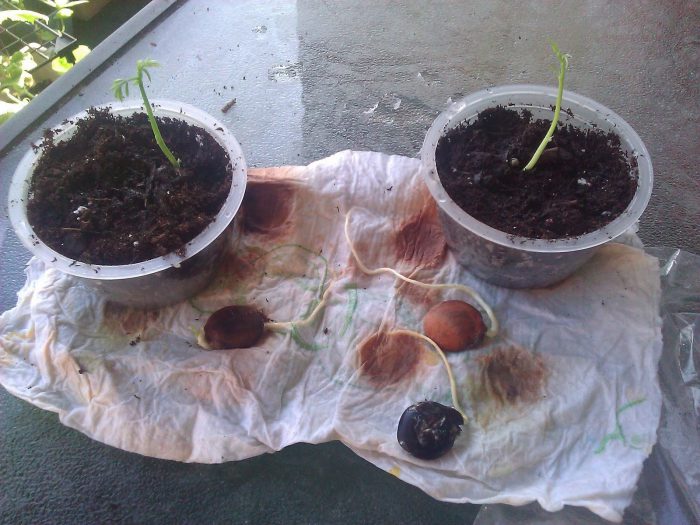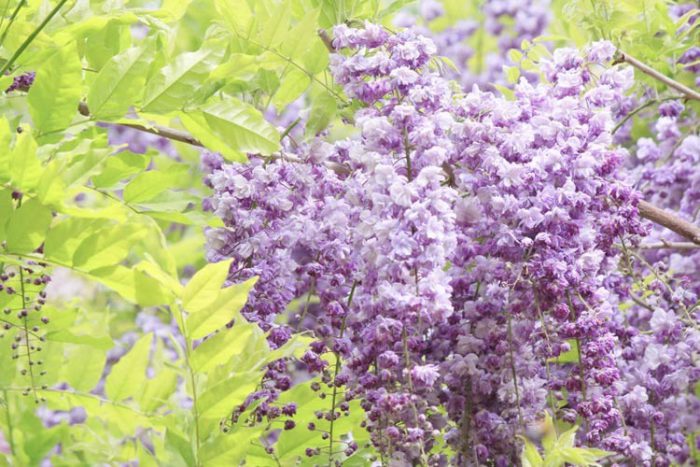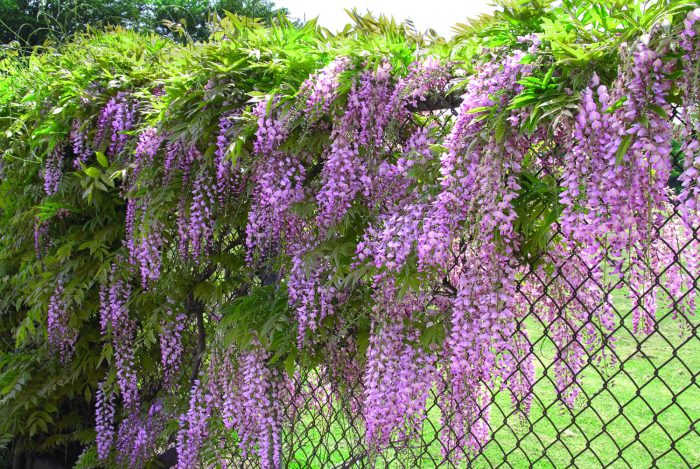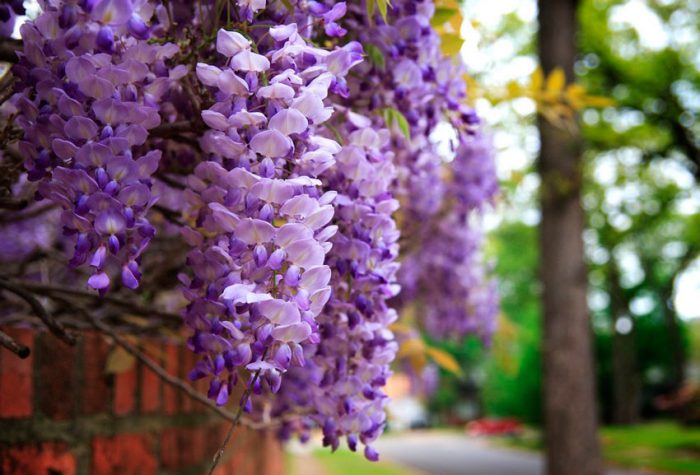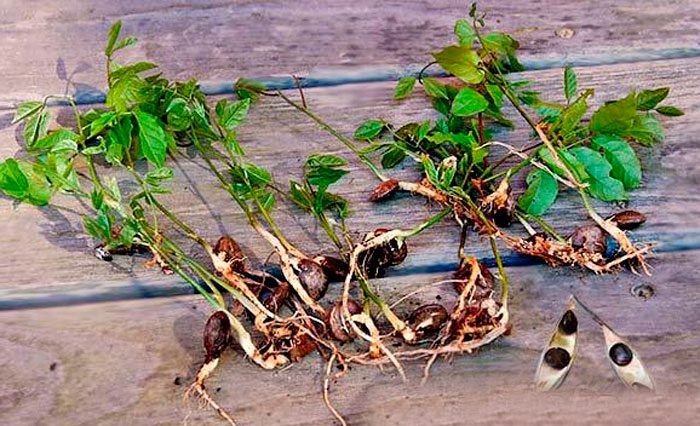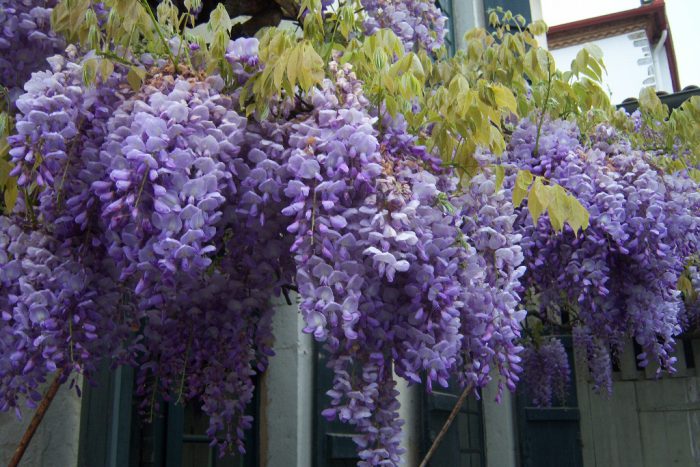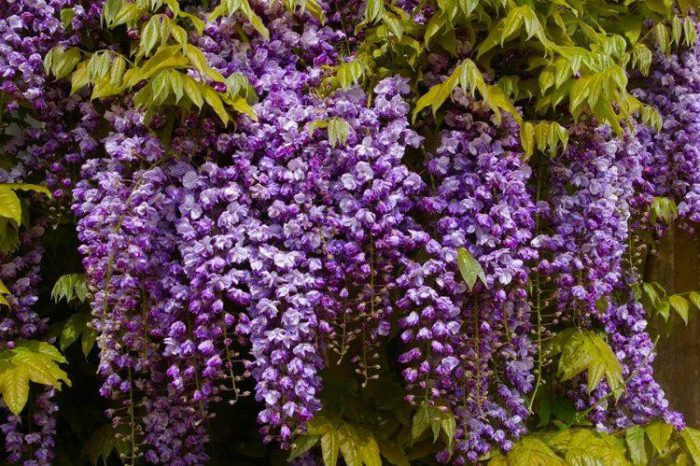Such a plant as wisteria (Glicinia - "sweet") is also called wisteria (Wisteria). It has to do with tree-like climbing plants of the legume family. In natural conditions, they can be found in subtropical areas. They stand out from the rest of the plants with their drooping, fragrant, purple-colored inflorescences. The plant got its Latin name wisteria in honor of Caspar Wistar, who was a professor of anatomy at the University of Pennsylvania. This genus unites 9 different species. However, only 2 of them are cultivated, namely: Japanese wisteria (abundantly flowering) and Chinese wisteria.
Content
Features of wisteria
Under natural conditions, this plant is a woody deciduous liana, the branches of which are drooping. It reaches a height of 15 to 18 meters. In this plant, leaf plates are pinnate and reach 30 centimeters in length, and they include 7-13 leaves. While the leaves are young, there is pubescence on their surface. The drooping brushes are about 30 centimeters long; they consist of fragrant flowers that can be painted lilac, purple or white. Flowering begins in the last days of March and lasts throughout the summer. Such a tree is widely used in landscape design. It is grown as a vine that wraps around a fence or the walls of a gazebo, and it is also cultivated as a standard tree. Wisteria is also grown indoors in a container as a tree, but it is cultivated much more often in the garden.
Growing wisteria from seeds
Seeds are sown in the last days of November or the first days of December. Seeds are sown on the surface of the substrate, and on top of them you need to cover them with a thin layer of sand. The substrate consists of sod and leafy soil, as well as sand, which are taken in a 1: 4: 1 ratio. After that, the crops must be moistened from the sprayer and cover the container on top with transparent glass. Then it is removed to a warm (from 22 to 25 degrees) and dark place, while it is necessary that the substrate be slightly damp all the time. The first shoots will appear after 3-4 weeks, and when 7-10 days have passed, after that the container can be rearranged to a bright place, shading from the direct rays of the sun.After the plants have formed a pair of real leaves, they will need to be dived into individual pots. At the same time, seedlings are transferred along with an earthen clod and irrigated with a weak solution of manganese potassium.
Saplings
After picking, the seedlings must be hardened. This can be done by moving the containers for 2 hours a day to the part of the house that is not heated, or you can open the window, but make sure that there is no draft.
Sowing seeds can be done at the beginning of the spring period directly into open soil. In this case, the seedlings will be very strong and hardy.
How to plant in open ground
Disembarkation is carried out in the spring, after there is no threat of night frosts. Despite the fact that all types of this plant are distinguished by their cold resistance, it is not recommended to expose young vines to frostbite. For wisteria, you should initially choose the most suitable place. In order for the flowering to be lush and spectacular, such a vine must be in the sun from morning to lunch. In this regard, it is necessary to choose a well-lit area for landing, which must necessarily be protected from strong gusts of wind. The soil should be fertile, slightly alkaline and well-drained.
How to plant
For seedlings, it is necessary to prepare a planting hole, the size of which should be 60x60x50. At the same time, first, mineral fertilizers are introduced into the soil for digging (1 m2 takes 25-30 g of the substance). It should be remembered that the planted plants may not grow for a long time. The fact is that this is a long-growing plant, and at first it grows a fairly long root system for several years. The first time such wisteria will bloom after 4–5, and in some cases all 10 years.
Caring for wisteria in the garden
From spring to the end of the summer period, wisteria must be watered in such a way that the soil of the trunk circle is always slightly damp (not wet). If the spring turned out to be dry, then special attention should be paid to watering, since with a lack of moisture, the vine can throw off the buds. From the second half of September, the plant is gradually watered less. For lush, timely flowering during the period of active growth, it is recommended to feed this plant 1 time in 7 days. In this case, it is necessary to alternate organic (mullein infusion, diluted with water in a ratio of 1:20) and mineral fertilizers (for example, Kemira-lux). Also, the plant responds well to watering with chalk water (100 g of chalk is taken for 10 liters of water), which should be done 1 time per season. Fading inflorescences must be cut off in time. You also need to remove dried branches in a timely manner, and also tie up and guide the stems, in this case they will not fall, and will grow in the direction you need. When preparing wisteria for wintering, it is necessary to earthen the root rosette high, after which the vine must be removed from the supports, and then it is laid on the near-trunk circle (the same is done with climbing roses). After that, the plant must be sprinkled with a layer of dried leaves, and lutrasil or spunbond is laid on top of them. It is possible not to cover the plant, but then in the winter with little snow, the vine will simply freeze.
Bloom
The flowering of Chinese wisteria can be seen after it turns 3 years old, and Japanese wisteria - 10 years old. In this regard, such a tree is suitable for growing those gardeners who have patience. The flowering of Chinese wisteria begins in April, with all the inflorescences opening at once. Flowering of Japanese wisteria is observed in May – June. You need to make sure that there is not too much nitrogen in the soil, in this case you will not see flowering, but there will be a lot of foliage.
Pruning
Pruning is done in order to stimulate flowering, and it also helps shape the tree. To form a standard tree, you need to choose the 1 most powerful shoot, and cut off all the rest.When growing wisteria in the form of a climbing plant, the side stems, which grow in large numbers, must be cut off. In this case, the vine will spend all its energy on flowering. In spring, you will need to cut off young shoots that stick out, the fact is that during flowering they will cover the gorgeous clusters of flowers. It should also be noted that the young one-year-old lateral branch of this plant produces inflorescences this year only if it is shortened by 30 centimeters. Vines are formed in the summer. To do this, you need to shorten the lateral shoots by 20-40 centimeters, and at the end of the summer period they are still cut by 10-20 centimeters. But excessive pruning is not worth it, because in this case the flowering will be less abundant.
Reproduction of wisteria
The above is detailed how to grow wisteria from seed. It should be remembered that a larger number of vines that have grown from such seedlings never begin to bloom, and no one can give an answer, which is why this is happening. In this regard, the vegetative method is considered the best breeding option. The easiest way is to propagate this plant by layering. In order to obtain layering, the strongest annual shoot should be chosen in spring. In the middle, an oblique incision is made on the surface of the bark. Then the stem is bent in such a way as to put the incised part on a container filled with a clay-sod soil mixture. After that, the branch is fixed in this position and instilled, while the upper part of the shoot should remain free. After the cuttings give roots, it can be separated, and it is recommended to do this with the onset of the next spring period.
Some more gardeners propagate this plant by grafting on the roots and using cuttings. However, these are ineffective methods.


Watch this video on YouTube
Diseases and pests
It happens that aphids or clover mites settle on a plant. An acaricidal agent is used to kill ticks, and insecticides are used to combat aphids. If you plant a plant on alkaline soil, it can provoke the development of chlorosis, as a result of which the leaf plates turn yellow. To cure the affected specimen, it must be root-fed, using iron salts for this.
Types and varieties of wisteria with photos and names
Chinese wisteria (Wisteria chinensis)
This densely leafy liana can reach a height of 15 to 20 meters. Large unpaired leaf plates, while young on the surface, have pubescence, then with age they become smooth. The length of loose racemose inflorescences is about 30 centimeters. They consist of flowers of a pale lilac color. The fruit is a pod that can reach a length of 15 centimeters. This species has a garden form with double flowers (f. Plena) and white flowers (f. Alba).
Wisteria abundantly flowering, or multi-flowered (Wisteria floribunda)
This species is also popularly called "Japanese", because the homeland of such a plant is the Japanese islands. In height, such a liana can reach from 8 to 10 meters. Unlike the previous species, this leaf plate can be up to 40 centimeters long, while the number of leaves can reach 19. It has a larger number of inflorescences, and they are also much longer (they can reach 0.5 m in length). The flowers, in comparison with the previous species, have a smaller size, and they are painted in a bluish-purple color. They open gradually, while starting from the base of the inflorescence. This species is more cold-resistant than Chinese wisteria. There are garden forms with double flowers, painted in pink, white or purple, and there is also a variegated form, in which the leaf plates have a variegated color.
In addition to these 2 species, gardeners cultivate beautiful wisteria (Wisteria venusta), shrubby wisteria (Wisteria frutescens) and large wisteria (Wisteria macrostachys). At the same time, large wisteria was used to create Blue Moon wisteria by American specialists (from Minnesota), this plant does not need to be covered for the winter.
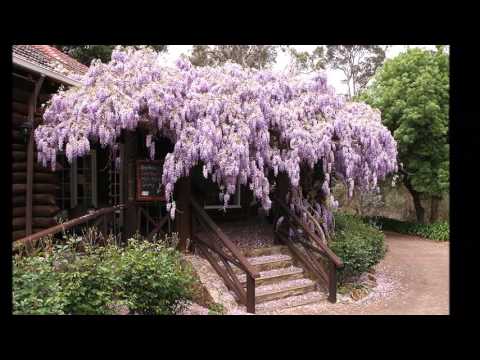

Watch this video on YouTube

